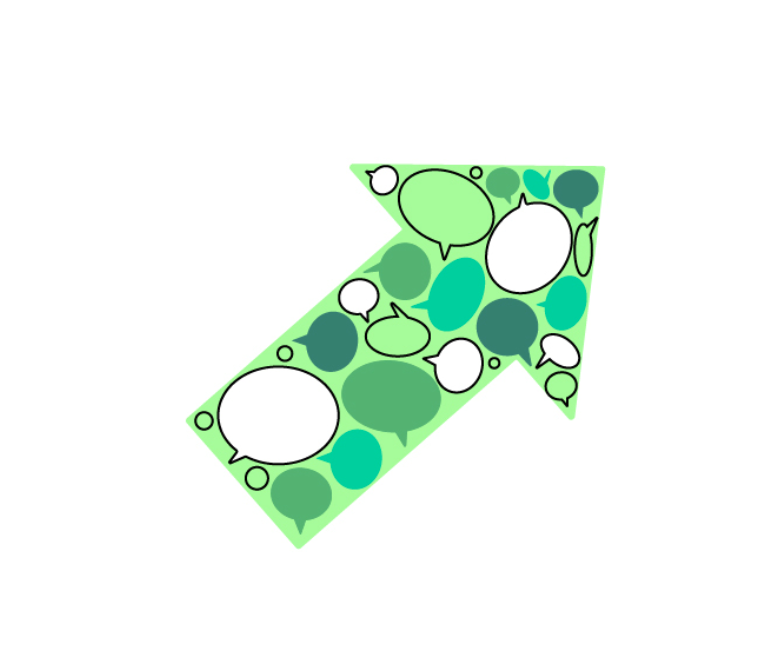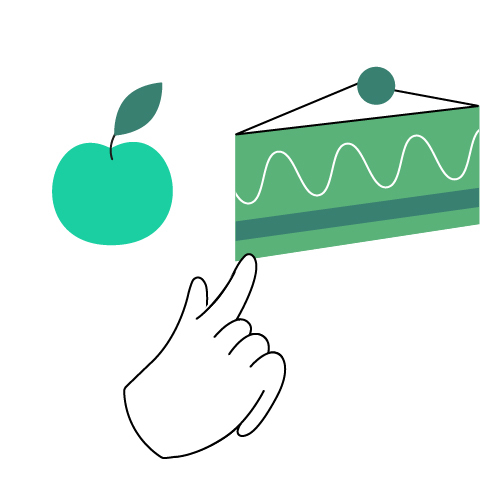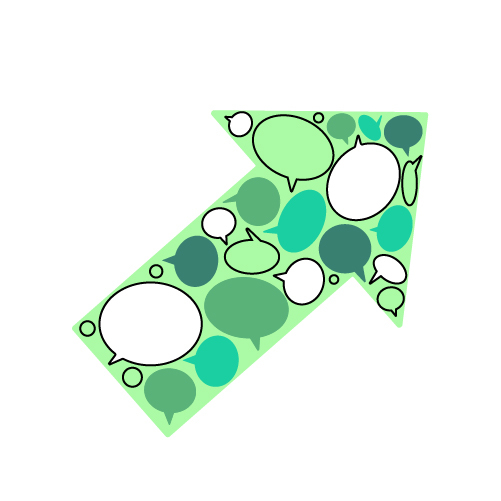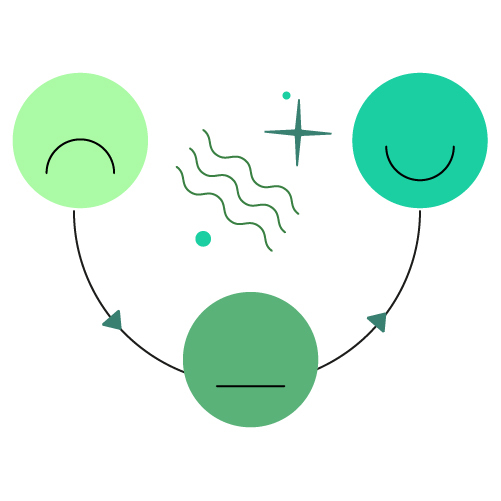
Latin American perspectives in support of Social and Behaviour Change
SBC strategies and approaches need to be contextualized to maximize their reach and effectiveness.
Introduction
Social and Behaviour Change (SBC) strategies and approaches need to be contextualized to maximize their reach and effectiveness through the recognition of the different realities they are interacting with, and the acknowledgment of specific knowledge, techniques and strategies that emanate from the different regions in which UNICEF operates.
In that sense, the Latin American Region (LACR) offers both a theorical and a practical set of ideas and experiences that, in their uniqueness, can serve as an inspiration and even be extrapolated to other regions to nurture dialogues and debates in the field of SBC. This page aims at summarizing the most salient ones while acknowledging the LACR leading role and key contributions to other methods and approaches such as Edutainment, Participatory Action Research, Decolonization studies, Social Art, Collective Action and Inter-personal Communication.
The content below has been developed in collaboration with the Universidad del Norte (UNINORTE) and the SBC LAC Think Tank Centro de Pensamiento para SBC.
Pedagogy of the oppressed
In the 1970s, the Brazilian educator Paulo Freire developed a pedagogical proposal called critical pedagogy or pedagogy of the oppressed that proposed to imagine education not only as a transfer of knowledge and specific skills, but also as a model of social intervention that would lead to awareness of communities as a basis for intervening in their realities and social problems.
Freire's proposal proposes an epistemological disruption with traditional pedagogy, which proposed a vertical communication between the teacher and the student, since from this traditional perspective the school was conceived as an agent of reproduction of information where the development of propositional and critical thought processes is not necessary.
As a theoretical-practical alternative, Freire proposes the Pedagogy of the oppressed, and proposes to conceive education as an emancipatory practice to generate a "new man" aware of his reality and committed to its transformation. Freire's proposal highlights dialogic construction, critical humanism, emancipatory practices and reinvention.
Theatre of the Oppressed
“The catharsis of the Theatre of the oppressed is not a process that purges the desire to take action, but the one that removes those blocks that inhibit action” (Boal, 1995).
Created by Augusto Boal, the foundational message of Theatre of the oppressed is that we are all actors, and being a citizen means not just living in society but changing it.
The use of theatrical language allows people in the community to communicate through a variety of artistic and linguistic forms, without placing one above the other. It also respects the knowledge that participants already have. This approach encourages people to learn theatrical language to express their own reality and engage with the contradictions of that reality.
The Theatre of the oppressed is a form of performance that involves the participation of all people. It is a celebration of freedom, where everyone is invited to take part. This type of theatre aims to liberate individuals and transform them through the power of acting. Boal's idea is that the spectator must become an actor in order for theatre to reach its full potential. Boal's theatrical experiments in Latin America are presented as a model of practice, with the spectator being freed to think and act for themselves.
Key Concepts:
- Al theatre is necessarily political. Connectedness to the system by which a society is organized and governed is what politics refers to, not specific attitudes.
- A spectator becomes a spect-actor. The phrase "to act" has a twofold meaning: it refers to both theatrical action and sociopolitical action. Theatrical action requires the presence of a spectator, who, unfortunately, does not participate in the action. According to Boal's theories (based on Paulo Freire), liberation in theatre can only happen when the spectator becomes an actor.
- Emotions generate the avoidance of action. Aristotle believed that catharsis is a way to cleanse the emotions of the audience by allowing them to identify with the character's emotions. Boal, inspired by Bertolt Brecht's ideas, argues that this approach leads to an emotional overload that can weaken the audience's ability to take action.
Sentipensar
The concept of Sentipensar (“FeelThink”) was developed by the Colombian sociologist Orlando Flasborda in the 1970s and implies “thinking with the heart and feeling with the head”. This concept was found during the process of one of his investigations while talking to fishermen of the Magdalena River in the Colombian Caribbean. The sentipensante (feelthinker) being is then an amphibious, hybrid being that combines reason with emotion and affections, and sentipensar becomes a reflective and humanistic posture necessary to approach research and the construction of knowledge.
Epistemology of the South
The epistemology of the South seeks to recognize and make visible the knowledge denied by modern reason and is proposed as a necessary alternative to achieve global social justice, which is only possible through a global cognitive justice.
It represents a search for knowledge that gives visibility and credibility to the cognitive practices of peoples historically oppressed by colonialism. This project of the epistemology of the South is developed by Santos (2009) under three fundamental premises: the first calls for a recognition and understanding of the non-Western world, the second denounces the invisibility that has been historically constructed towards non-Western knowledge and ways of seeing the world, and the third highlights the need to explore, recognize and enhance plural forms of knowledge.
Santos points out that the epistemologies of the South are based on "a South that is not geographical, but metaphorical: the anti-imperial South," but "It is also the South that exists in the North, the oppressed, marginalized groups of Europe and North America. There is also a global North in the South; it's the local elites who benefit from global capitalism."
Hybrid Cultures
The Argentinian researcher Néstor García Canclini, who developed his academic work in Mexico, has made an important contribution to the reflection on culture and the way in which many factors such as migration, globalization, the use of the media and technology lead to the interweaving of many perspectives that generate and/or encourage the emergence of new forms of culture. According to García Canclini there is a process of interweaving and cultural exchange through hybridization that leads to "sociocultural processes in which [some] discrete structures or practices, which existed separately, combine to generate new structures, objects and practices" (García Canclini, 2006: XIX). In this way, cultural hybridization refers to the mixing of different cultures and their practices, because cultures are neither static nor fixed, but rather, they are constantly changing and evolving as people interact and exchange ideas. According to Retondar (2008), the notion of hybridization aims "to transcend the relations of direct opposition between the popular, the cultured and the massive; the playful and the rational; the mythical and the technological; in a word, between the traditional and the modern, becoming a notion that, based on the principle of interculturality and the coexistence of transhistorical temporalities, denies the binary simplification between pairs of conceptual opposition as a model for explaining reality and social dynamics, in favor of a perspective that recognizes in the fusion of apparently disparate elements the very essence of that dynamic".
Minga of thought
The Minga stems from traditional collaborative work practices developed among Andean indigenous peoples since the pre-Hispanic period. Historically the Minga was a form of collective work around the agricultural production needs of the community. The Minga of though is a collective meeting space to think, dialogue and exchange knowledge about a topic of common interest to make decisions that guide and motivate the actions to be developed. The Minga of thought has a fundamental characteristic: reciprocity, that is, knowledge and actions are shared and received and thus, in a disinterested way. It is a collaborative work where the sum of efforts brings with it a reward at a group and individual level.
In addition, Mingas become a methodological tool for their own research that shares participatory features and transformative purposes that connect them with participatory perspectives such as Orlando Fals Borda's (1986; 1981) IPA, and activist co-research experiences (Villasante, 2007).
The Good Living
The concept of Sumak Kawsay or good living is associated with the indigenous groups of the Americas and radically distances itself from the Western developmentalist conception that conceives progress as accumulation of material goods and in exclusively economic terms.
The Good living is not another development model, but an alternative to development. It is about living well, but in harmony with the environment, and based on the respect and cordial relationships with others.
Communication for the Good Living
Based on the Good Living approach, Adalid Contreras has developed the link to a different communication with emphasis on this conception, which the native peoples of Latin America have: "Communication for the Good Living" is a process of construction, deconstruction and reconstruction of social, cultural, political and spiritual meanings of intercultural and community coexistence with reciprocity, complementarities and solidarity; within the framework of a harmonious relationship at personal and social as well as with nature " (Contreras, 2014).
This means that human beings can construct new meanings, but also of discard those they already possessed in order to change them for more useful ones and also to rethink existing meanings according to their new experiences. In other countries for example, Guatemala, the Mayan people propose it as "fullness of life" (K'aslemalil): to be well fully and integrally from oneself and among all, in harmony with natural resources and humanity.
Communication for the Good Living contemplates a process that, in tune with Latin American approaches, includes: Feeling-thinking (how do we perceive reality from our own experience, dreams, context, etc.? are we satisfied with reality as it is? does it help us to live well?). Decide-act (do we want to change this reality? what can we do to achieve it? what are the options? which ones do we decide? what are we going to do?) and, Living together (How can we – as a community – ensure this change, creating a shared vision for the Good Living.
Self-communication
Self-communication is the set of communication practices and knowledge deeply rooted in cultures and orality of Indigenous and Afro ethnic peoples, that function to interact with each other, with their spiritual worlds and with their territories.
Self-communication is then anchored in the culture, territory and autonomy of ethnic peoples to tell each other through their own practices, spaces and communication channels, as opposed to appropriate communication, which is understood as the use and adaptation of technological and digital communication tools by these ethnic peoples.
Dialogue of Knowledge
“I was confronted with the other man’s vision of the world and I came into contact with appreciations completely different from my own... As I translated his words, I began to think that neither of us possessed the hegemony of truth.” (Ghiso,1997).
Dialogue of knowledge or dialog among different knowledges and ways of knowing, is an approach that proposes to generate horizontal, equitable and bidirectional communication and exchange processes between people, groups or communities coming from different origins, cultures, or different knowledge systems (such as scientific or institutional and local or traditional knowledge), to reach agreements and make decisions on issues of common interest.
According to PAHO (2021), the starting point of knowledge dialogues "is respect for the opinions, beliefs, and customs of people and groups that do not necessarily agree on the points to be discussed, as they come from different cultural, linguistic, religious, and ethnic roots".
Dialogues of knowledge emerge in Latin America as a demand generated from below, from historically marginalized populations (indigenous peoples, Afro-descendants, peasants) who have incessantly fought for the recognition of their differentiated cultures and identities. Dialogues of knowledge emerge in Latin America as a demand generated from below, from historically marginalized populations (indigenous peoples, Afro-descendants, peasants) who have incessantly fought for the recognition of their differentiated cultures and identities.
Popular Communication
The importance of popular communication lies in “its capacity to materialize and express the way of living and thinking of the “subordinate” classes, the ways in which they survive and the stratagems through which they filter, reorganize what comes from the hegemonic culture, and integrate and merge it with what comes from their historical memory.” (Barbero, 1983).
Popular communication is associated with the processes of vindication of the right to communication of popular or marginalized sectors, and is associated with processes of empowerment, dialogue, and collective action. Popular communicators do not communicate for the people, they communicate with the people because they are the people, who communicate their own reality with the objective of transforming it based on the defense of human rights.
Alternative Communication
It is based on a critique of the hegemonic model of communication which has a mercantilist emphasis and an authoritarian and unidirectional discourse. This critique focuses on the elaboration of messages (in the hands of "experts") to disseminate (from the monopoly of the media) to the public (passive object), to transfer the dominant versions of the power groups. it criticizes the fact that the basic function is persuasion and the emphasis on mere "transmitting" (as opposed to the meaning of communication).
According to Daniel Prieto Castillo, this approach consists of proposing an alternative communication to the authoritarian discourse, which implies “moving from an authoritarian issuer or spokesperson for power groups, to community promoters of dialogue”. To go from being "receivers" to "perceivers" capable of evaluating the messages that arrive and making decisions critically. Moving away from one-sided messages, with single, closed versions of reality, to messages capable of opening dialog processes. And, above all, it provides the terms "referent" (version of the reality manifested in the message) and "frame of reference" (the reality from which the communication process makes sense.
Later, in the development of Alternative Communication, Prieto indicates that the following characteristics which differ from the authoritarian discourse must be present throughout the communication process: an alternative production (in community), an alternative product (generating dialogue processes), an alternative distribution (that reaches people through the channels of the communities themselves) and an alternative use (changing persuasive intentionality for an educational intentionality leading to social changes).
In this sense, Prieto states that Alternative Communication is "a different way of doing communication, both in terms of content and the form of the discourse, in order to avoid authoritarianism by all means; to organize themselves to produce it; to gain space in the dominant media, or to generate their own systems and collaborate in a different use of messages by the recipients (1994, p.78)
Mass Audiovisual Pedagogy
Its main promoter has been Manuel Cavelo Ríos, who indicates that, in the processes of social change that need to be generated from rural areas, one of the main inputs is the participation of the peasant in the conception and implementation of any project. For this to happen, he proposes a) Recover, produce, conserve, and reproduce knowledge, using video as the axis of the "peasant knowledge" process (the traditional, empirical, non-formalized knowledge of subsistence agriculture, and the modern, formalized scientific knowledge of modern market agriculture); b) That the peasant is an interlocutor during the research and audiovisual recording of the themes and becomes a participant during the audiovisual application or training, using the Pedagogical Package (video, participant's guide, pedagogical guide and practical work); c) As a user of knowledge, to increase his/her capacity to manage and negotiate with: natural resources, productive resources, genetic resources, the ecological environment, and health and housing; d) That this greater capacity for negotiation and management leads to an increase in production and productivity that will allow them to increase their level of survival, accumulation, generate self-development and confer on them bargaining power with the social environment.
This approach is based on the Interlocutor-Medium-Interlocutor (I-M-I) model, which consists of the process in which the dialogue begins between audiovisual pedagogues and peasants, in order to know people's own vision of the problem. Then, the production of the video that will form the pedagogical package is done, together with the farmer. Finally, there is dialogue in the use of the same video (audiovisual training).
Citizen Media
Colombian researcher Clemencia Rodríguez recognizes that the concept of citizen media "belongs to a wider family of concepts including 'community media' (Gumucio Dagron, 2001), 'alternative media' (Atton, 2002), 'autonomous media', 'participatory media' and 'social media'”.
Citizen media are those that promote symbolic processes that allow people to designate and express the world in their own terms. From this perspective, citizen media allow the subject to appropriate the media as a tool to tell their own story and become an active political subject that builds their own citizenship by exercising their right to communication. However, she defines Citizen Media as "those that promote symbolic processes that allow people to designate and express the world on their own terms". Rodriguez uses two authors as his theoretical foundation: From Chantal Mouffe she takes the notions of radical democracy, citizenship, and political action and from Jesús Martín-Barbero, the theories of identity, language and political power. Rodriguez affirms, based on Martín-Barbero, that the power communities must name the world on their own terms is directly related to their power to intervene in political actions. From this perspective, citizen media allow citizens to actively engage with the media and use it as a tool for democratic participation and social change.
From Media to Mediation
The Spanish researcher Jesús Martín-Barbero, whose academic career was spent in Colombia, proposed a conceptual shift that focused on culture and the power of audiences to negotiate and even subvert messages. The intention was "to change the place of the questions, to make the processes of construction of the mass investigable outside the culturalist blackmail that inevitably turns them into processes of cultural degradation. And to do this, to investigate them from the mediations and the subjects, that is, from the articulation between communication practices and social movements" (1987, p. 11).
A central element of Martín-Barbero's contributions is the concept of mediation, in which the researcher states that cultural production and reproduction undergoes a process of negotiation between "elements of popular culture and mass culture, and this is detectable in a variety of contexts: cinema, radio, the popular press, the circus or musical performances, etc. expressions that in turn are fundamental for the creation and recreation of identities" (Barranquero et al., 2017)
This idea highlights the negotiation processes that take place in popular cultures in relation to mass culture and at the same time invites us to reflect on how this contributes to creating and recreating different forms of identity.
Pedagogic Mediation
In the 1990s, Alternative Communication expanded to the educational field and the "Pedagogical Mediation" was born, built by Daniel Prieto Castillo together with Francisco Gutiérrez within the framework of the design of alternative distance education processes from Central America. It is a question of establishing a bridge between knowledge and the subjects to whom it could be useful. A two-way bridge that allows this knowledge to be accessible from the perceiver's environment and that the perceiver always has access to continue building new knowledge.
To this end, the bridge is a mediator, the communicator becomes a pedagogical mediator, because what is sought is that every message serves to transform reality. This means promoting the subject's learning, an active and even learning that adapts to uncertainty. The authors insist that the interlocutor is always present (to build content with him) and that there are no finished texts, these are finished with the subject who puts the other half.
To carry out pedagogical mediation there are three angles or moments: The content angle (which includes a series of discursive strategies to give it a truly pedagogical emphasis: generator of learning, these are focused on entry, development, and closure). The learning angle (which includes a series of strategies aimed at generating learning from the subject himself and his or her story, his or her group, the text, the context and the facilitator. It also contemplates generating learning from various types of exercises such as self-reflection, meaning, resignification, foresight, problem-solving and approaching, etc.). And the form angle (which consists of making the form, the presentation of the content mediated in the two previous steps, also pedagogical, this includes: use of images, design, didactic box in the case of print, radiophonic languages, audiovisuals, etc.)
Participatory Budgeting
Participatory budgeting is understood as the mechanism that allows communities the total or partial planning of public resources. It originated in Brazil, in 1989 when Olivio Dutra, mayor of Porto Alegre, established a new mechanism for resource administration at the territorial level. The proposal sought to establish social justice by encompassing social classes that until then had been excluded and had no representation (Mancuso, 2012). The population participated directly and actively in structuring the budget and in the control of its execution. This tool for democratization of government management was expanded by Brazil to 100 cities between 1997-2000, and was replicated in countries such as Argentina, Colombia, Ecuador, Uruguay, and Venezuela.





